Outside Tile Flooring - Ideas for Patio Flooring and Steps
Outdoor steps make an important element of a house and any building. Tiles are one of the most popular materials used for patio floors. Their appearance is the main aspect considered by homeowners. There are, however, other important factors one should pay attention to. To create sturdy outdoor tile steps to last for a long time, it should combine both aesthetics and durability. Check how to pick tiles for outdoor steps.
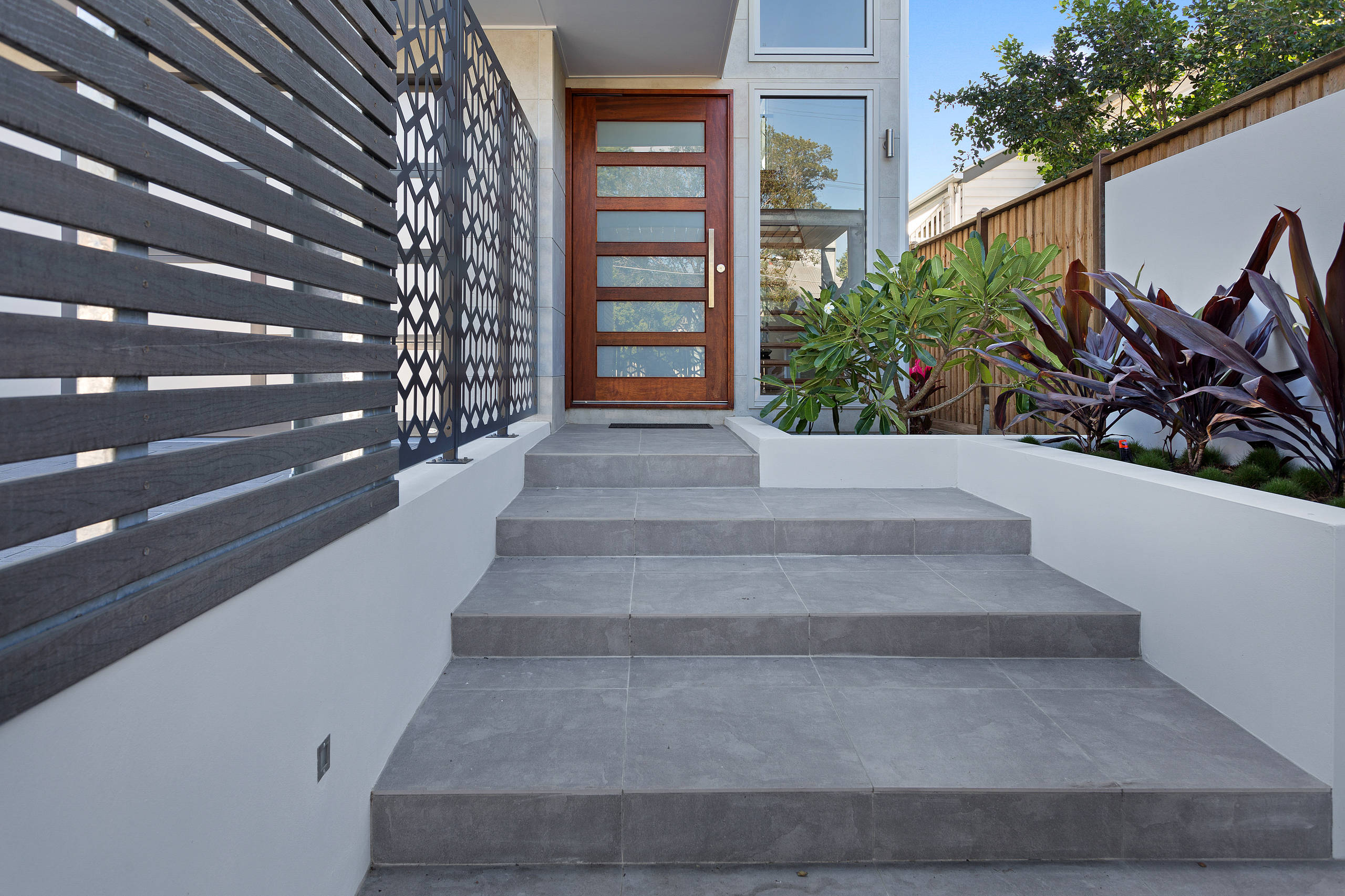
Outside steps tile flooring - which outdoor tiles are the best
Finishing outdoor steps is an important aspect of house construction. There is no difference whether you finish patio stairs or steps leading to the main entrance. Both are the representative elements of a house - therefore, they should combine a good appearance with proper functionality.
Outside stairs - perfect tile flooring for your house
Before choosing outdoor tiles for your stairs, take a look around and notice the rest of the elements of your house. Those are your markers - they should match the tile flooring and the steps. It is recommended to choose materials similar to the columns on your porch, windowsills, plinths and quoins. Outdoor steps should also match the paths and patios built around the building, as well as the garden. In some cases, the balcony design might also be an important factor. If you keep that in mind, you can design the whole building in a consistent way, including all the details.
{:.distinction.distinction-information} Ceramic and sandstone tiles are perfect for traditional styles, such as rustic. Granite tile flooring is better for more elegant properties, as it highlights the style. If your house was designed in a modern style, porcelain tiles is a good choice because of their simplistic form.

Outdoor steps tile flooring - the most important issues
Apart from the appearance, outside floor tiling material should contain several features that decide on their durability. You should pay attention to aspects such as:
- Water absorption - firm structure of the material ensures that a tile is not easily damaged. Floor tiling that quickly absorbs water tends to crack and break if placed outside. For this reason you should choose tiles of as low as possible water absorption rate.
- Slip resistance - this parameter is marked by an “R” letter. Nonslippery tile flooring range from R9 to R13. Materials below R9 are slippery and they shouldn’t be used outside. For outside stairs, you should choose R11-R13 tiles. You can also purchase tiles with diagonal channels for additional protection from slipping.
- Frost resistance - protection from low temperatures. Manufacturers mark it with a snowflake symbol.
- Abrasion resistance - outside tile flooring is usually used quite intensely. The material should be resistant to abrasion. Tiles for outside steps should be classified as type 4 or 5.
- Hardness - outside tile flooring should be resistant to mechanical damage. Tiles classified as 7 or 8 on the scale of hardness are the strongest. They are highly resistant to scratching and breaking.
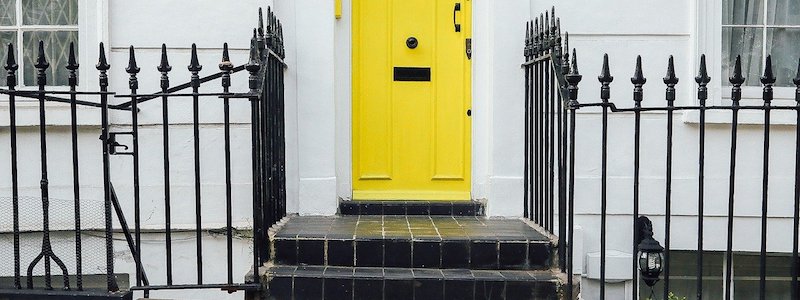
What outdoor steps tile flooring is the best?
Plenty of materials can be used for tiling stairs. Particular products differ from each other by appearance, features and price. Before choosing the right tiles, one should take every aspect into consideration.
- Ceramic tiles - one of the most commonly chosen materials. Ceramic tiles are quite durable. They are highly resistant to abrasion and water absorption, and they can endure very low temperatures as well as extreme weather conditions. Unglazed ceramic tiles are good to use in places that are not very exposed, such as basement stairs. For tile flooring in front of the building, it is better to choose better looking glazed or porcelain tiles.
- Clinker - such tiles are made of clay and sand. Clinker tiles are very attractive, as they resemble bricks. They are very good for rustic or industrial style. The method of their production is firing them in high temperature, which makes them very durable. Clinker is resistant to frost and mechanical damage and tiles made of this material are non-slippery. They can be used for outdoor tile flooring, as well as for facades.
Low resistance to dirt is a big disadvantage of this material. For this reason clinker surfaces need to be cleaned regularly.
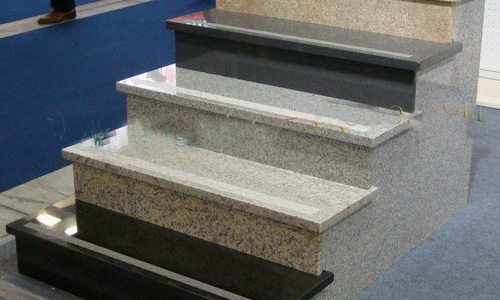
- Granite - one of the most durable materials for tile flooring. It is resistant to abrasion, moisture, dirt and low and high temperatures. Granite has many colours and is very elegant. It has many textures, therefore you can choose the right type for your purpose. Granite floor tiling is long lasting and very aesthetic.
- Sandstone - tiles made of this material are far less resistant than granite. Pay attention to the hardness when choosing such product, as there are various types of sandstone. Some types easily absorb water and break quickly. Sandstone tile flooring for stairs are non-slippery.
- Travertine - it is a naturally coarse material and the tiles made of it are anti-slippery. Travertine is not very durable, and it can be easily scratched. To prevent this, such tile flooring should be coated with a layer of resin.
{:.distinction.distinction-information} Apart from tile flooring, you might consider using other materials for outdoor flooring. Paving stones are good alternative as they are cheaper than tiles and resistant to damage and abrasion. You shouldn’t, however, use paving stone flooring if there is other material on the patio or the path by the stairs. It would look unaesthetic.
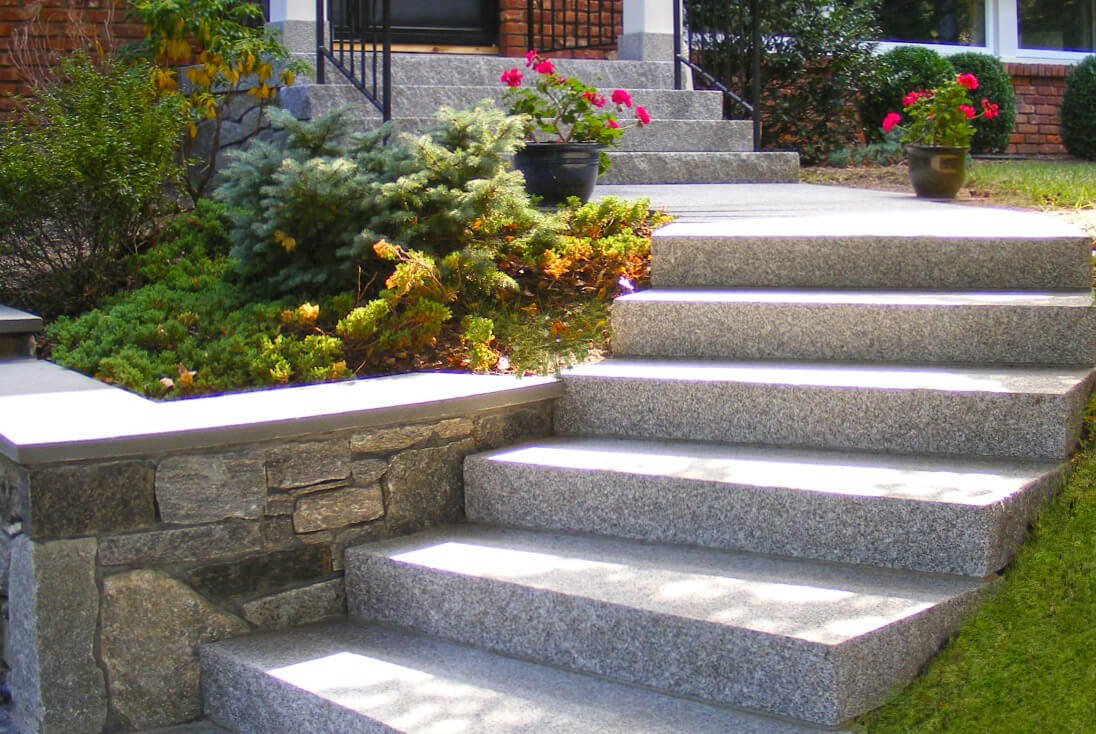
How to install outdoor tiles on stairs?
Laying floor tiles by yourself is not very difficult. It is important to choose tiles with the right qualities. If laid properly, the tiles will last for a long time without damage. When tiling the stairs, remember about a few issues:
- Choose tiles that were produced particularly for the purpose of covering steps. Elements included in such sets are easier to install and the overall appearance of the stairs is better.
- If you have to cut the tiles, cut only those that you plan to place on the edges of the stairs. Such procedure helps to keep the symmetry of the stairs and the cuts are less visible. The steps look more elegant.
- Before beginning the process of laying tile floor make sure that the steps have correct slope. It is important that the water flows down - if it stayed on the surface, it would damage it. If you notice that the stairs do not have the proper slope, you need to fix it using spackling paste. The correct stair slope is 1-2%.
- Make sure that the surface is even and clean. To increase the grip and lower the water absorption, prime the surface.
- Before you can install the tiles, you should waterproof the stairs. To do this, cover them with two layers of sealing plaster.
- The adhesive should be intended specifically for tiles. It should be frost- and water-resistant.
- Start working from the highest step and proceed downwards. Begin with horizontal tiles and finish with the vertical layer.
- You can grout the tiles after 2-3 days from laying them. Make sure the grout is of the same brand as the glue. Such products work better with each other than the ones from different brands.
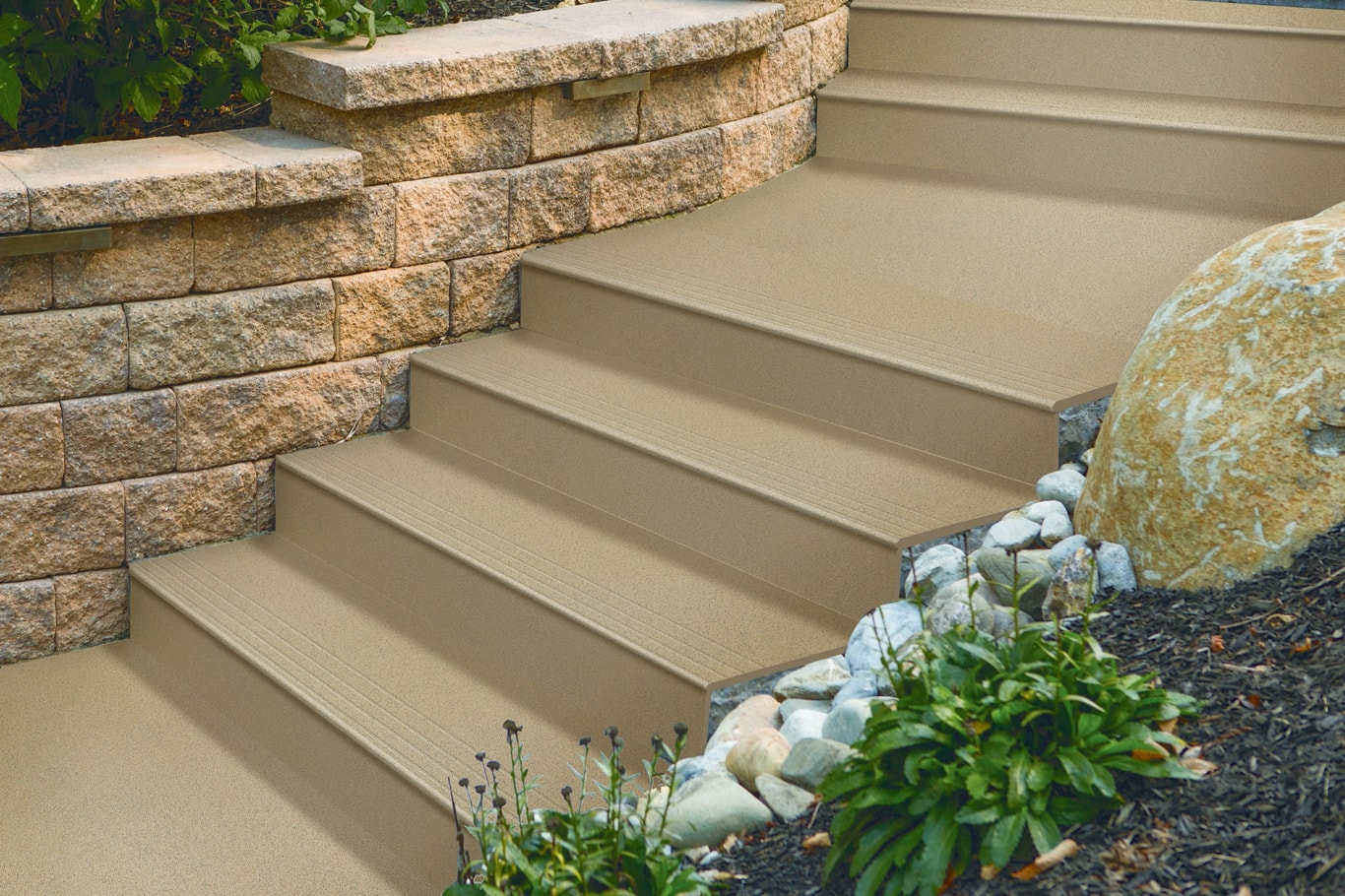
Outdoor tile for stairs - what to avoid?
The most common mistake that you can make when choosing outdoor tile for stairs is paying attention only to how the tiles look. Aesthetics is, of course, an important aspect which affects the looks of the whole building. Do not forget, however, that a house entrance is the most used spot of its surroundings. That is why the durability of the outdoor tile is so important. Another, equally significant issue is the practicality. Avoid deeply carved patio tiles. They are much more prone to damage.
If ornamental outdoor tile is a must for you, choose patio tiles with an interesting colourful pattern.
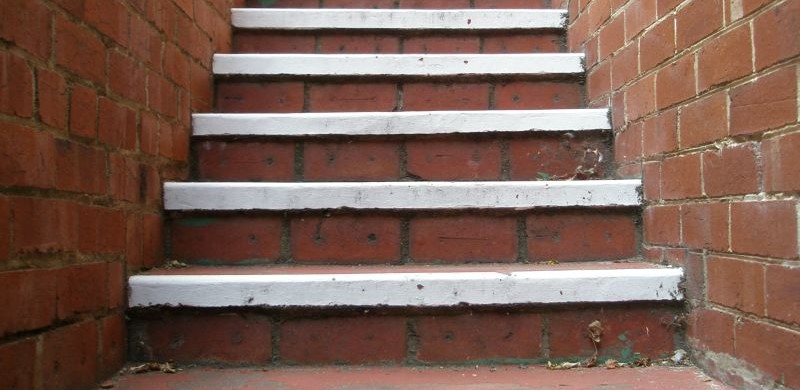
The process of installation is an important issue as well. Outside tiles need using special products to stick them. The glue should be able to endure changing temperatures. It should be also resistant to weather conditions.
Choosing the right tile flooring for your stairs might be a tricky issue. You need to consider only a few aspects to make the purchase easier. Well chosen and laid floor tiling lasts for years, making the house look elegant and well-maintained. It is, therefore, worth spending some time to buy the right tiles for your house.
Remember that outside tile on stairs and patio should match the paving stones and their colour. If you want more changes in your garden, check some new ideas for its design. Thuja trees and ornamental shrubs might be a perfect addition.

📍 How to install tile flooring?
After measuring the surface and establishing layout line for the tiles, spread mortar over around 1 meter square area. Lay the tiles starting from the first crossing of two layout lines and continue, applying small patches of mortar.
📍 How to remove tile flooring?
All you need is a hammer, hand-held chisel and a floor scraper. Break up the first tile and carefully remove the pieces using the chisel. Then pry off several other tiles - if the adhesive is soft enough, you can use the floor scraper to remove several tiles at once.
📍 How much does it cost to install tile flooring?
The cost depends on the type of tiles you install, the area you are going to tile and the price of additional materials. Ceramic and clinker tiles are the cheapest, whereas granite is more expensive but also more durable.
📍 How to install vinyl tile flooring on concrete?
If the concrete is dry and clean, make sure it is even, and smoothen it if needed. Then place the tiles according to the manufacturer’s recommendations. Some types of vinyl tiles can be laid without adhesive, while others require using this product.
Featured articles




